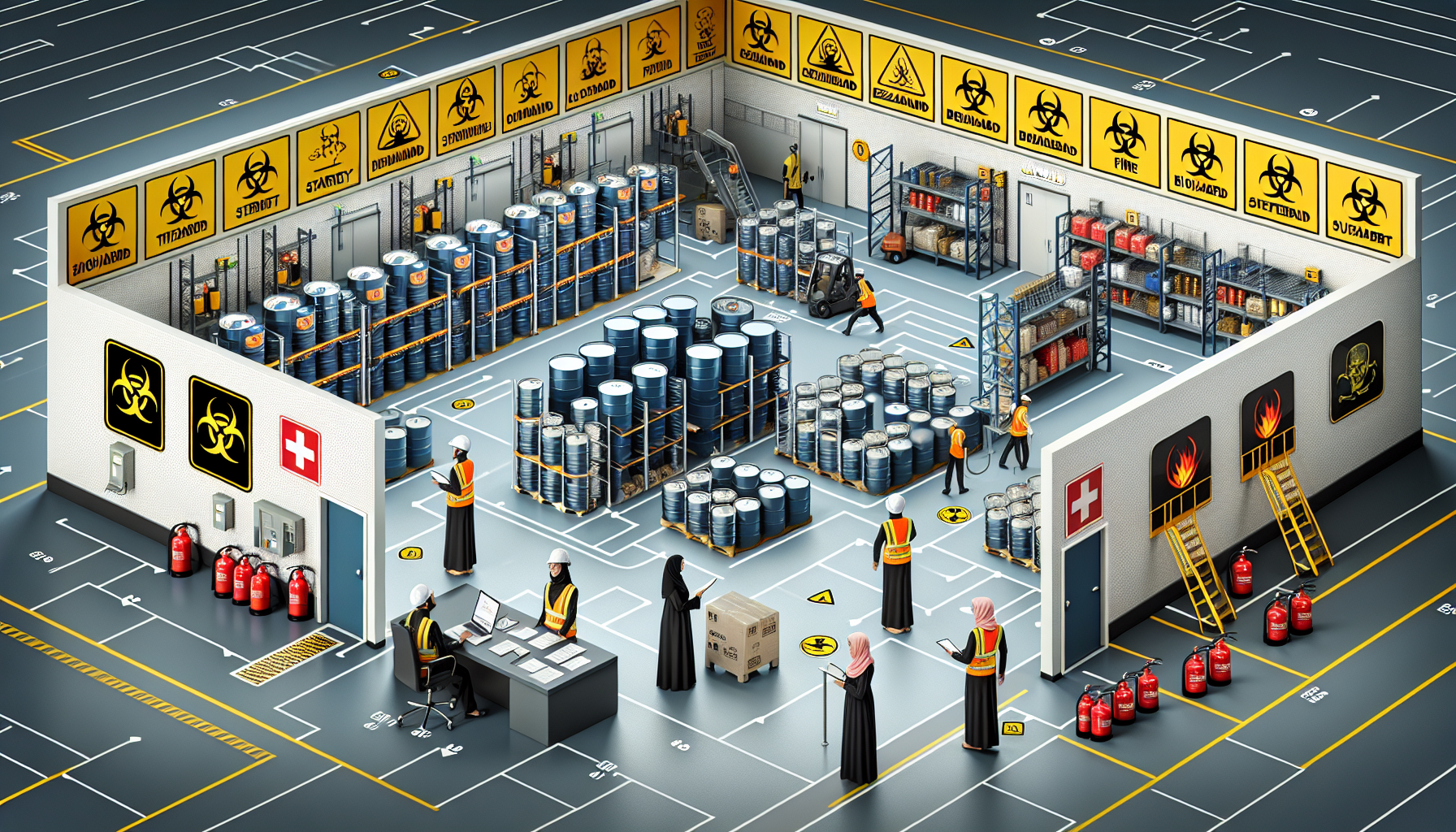In warehouse operations, safety is of paramount importance, especially when it comes to handling hazardous materials. Proper planning and designing of a warehouse layout for hazardous materials can help minimize risks, enhance safety protocols, and ensure compliance with regulations. In this article, we will explore the key considerations and best practices for designing a warehouse layout specifically tailored to handle hazardous materials.
Evaluating the Warehouse Space
Before starting the design process, it is crucial to evaluate the available warehouse space and understand its limitations and strengths. This assessment will help determine the most appropriate layout that optimizes safety, productivity, efficiency, and cost-effectiveness. One useful tool for evaluating warehouse space is a warehouse layout evaluation. It provides comprehensive insights into the current layout and helps identify areas for improvement.
During the evaluation process, consider the following factors:
- Storage Capacity: Assess the warehouse’s storage capacity to ensure it can accommodate the volume and types of hazardous materials to be stored. Consider shelving systems, storage racks, and specialized storage units designed for hazardous materials.
- Access Points: Evaluate the location of entry and exit points to ensure smooth flow of hazardous materials in and out of the warehouse. Consider the positioning of loading docks, receiving areas, and delivery zones.
- Emergency Exits: Identify and optimize emergency exits to ensure quick and safe evacuation in case of accidents or emergencies.
- Workflow: Analyze the workflow and material handling processes to identify potential bottlenecks, inefficiencies, and safety risks. Consider the sequencing of operations and the logical flow of hazardous materials within the warehouse.
- Infrastructure: Assess the structural integrity of the warehouse to ensure it can withstand potential risks associated with hazardous materials, such as fire-resistant materials and adequate ventilation systems.
Segregation and Zoning
Proper segregation and zoning is crucial when designing a warehouse layout for hazardous materials. This ensures that incompatible substances are stored separately, reducing the risk of chemical reactions and hazardous incidents. Consider the following guidelines for segregation:
- Segregate hazardous materials based on their chemical compatibility and potential for reaction.
- Store incompatible substances in separate designated areas or zones to prevent cross-contamination.
- Clearly label each zone for easy identification and ensure employees understand the segregation requirements.
- Implement physical barriers, such as partitions or walls, to separate incompatible materials.
Proper Storage and Handling
The proper storage and handling of hazardous materials are vital for ensuring safety within the warehouse. Consider the following best practices:
- Store hazardous materials in approved containers and cabinets specifically designed for their storage. Ensure these containers are clearly labeled with the appropriate warning signs and instructions.
- Implement proper ventilation systems to control and remove toxic fumes or gases released by hazardous materials.
- Establish proper handling protocols and provide proper personal protective equipment (PPE) for employees.
- Train employees on the safe handling and storage procedures for hazardous materials.
- Regularly inspect storage areas and containers to identify and resolve any issues promptly.
Emergency Response Preparedness
When designing a warehouse layout for hazardous materials, it is essential to have a robust emergency response plan in place. Consider the following key aspects:
- Establish clear emergency evacuation procedures and communicate them to all employees.
- Ensure there are easily accessible fire extinguishers, emergency showers, and eye-wash stations throughout the warehouse.
- Train employees on emergency response protocols, including how to handle spills, leaks, or other hazardous incidents.
- Regularly conduct drills and simulations to test the effectiveness of the emergency response plan.
By following these guidelines and best practices, you can design a warehouse layout that prioritizes safety and compliance when handling hazardous materials. Remember, it is crucial to regularly review and update the warehouse layout as the nature of hazardous materials and regulations may evolve.

